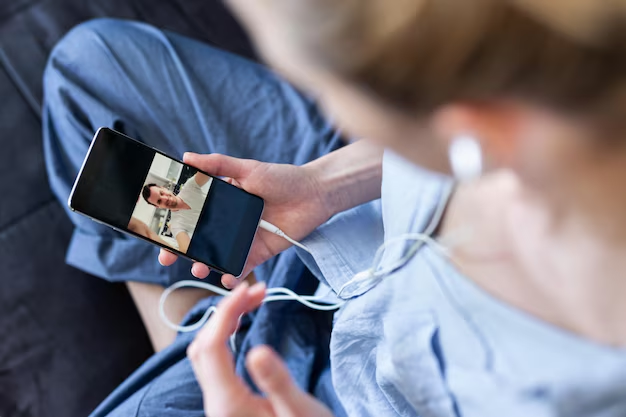Discovering the Hearing Test Feature on iPhone: Using AirPods Pro as Your Guide
For those who use the iPhone in tandem with AirPods Pro, the question of how to perform a hearing test may arise, particularly if you're using the devices to enhance your auditory experience. This feature is particularly relevant as personal audio technology becomes increasingly sophisticated, but technology alone doesn't replace regular hearing evaluations by a healthcare provider. However, Apple's sound equipment can significantly aid in understanding your hearing preferences and provide personalized sound profiles for better audio experiences. Let's explore how you can leverage these tools to conduct a hearing test directly from your iPhone using AirPods 4.
🎤 What is the Hearing Test on the iPhone with AirPods Pro?
The focus here is on the iPhone's integration with AirPods, particularly the "Ear Tip Fit Test" and "Headphone Accommodations" features. These are pivotal in enhancing users' listening experiences. Ear Tip Fit Test ensures that your AirPods fit well for optimum sound quality, while Headphone Accommodations adapts the audio to suit your hearing needs better.
Ear Tip Fit Test
The Ear Tip Fit Test is a smart feature that helps you select the best size of silicone ear tips for your AirPods Pro, ensuring comfort and superior sound quality.
How it Works: By playing music in the earphones, the built-in sensors and microphones detect sound level loss and offer the best recommendations based on the ear tip size.
Why It’s Important: Properly fitting ear tips improve passive noise isolation, enhancing every detail in the audio.
Headphone Accommodations
Headphone Accommodations allow you to customize your audio profile, making it more comfortable to listen to music, watch shows, and hear calls according to your unique hearing profile.
Customization Options: Users can adjust the balance between softer and louder sounds and choose frequency ranges that better suit their hearing.
Enable This Feature: This can be activated from your iPhone settings under Audio/Visual in Accessibility.
🔊 Step-by-Step Guide to Accessing These Features
Accessing Ear Tip Fit Test
- Connect Your AirPods: Make sure your AirPods Pro are connected to your iPhone.
- Open Bluetooth Settings: Navigate to Settings > Bluetooth on your iPhone.
- Locate Your AirPods: Find your AirPods in the list of devices and tap the "i" icon next to them.
- Select Ear Tip Fit Test: Tap "Ear Tip Fit Test" and follow the on-screen instructions to measure the fit.
Pro Tip:
Use headphones in a quiet room for precise results.
Setting Up Headphone Accommodations
- Access Settings: Go to Settings > Accessibility.
- Navigate to Audio/Visual: Under the Hearing section, tap Audio/Visual.
- Select Headphone Accommodations: Turn on the feature and adjust according to your preferences.
- Customize Your Profile: You can customize the settings to either adjust vocal range or enhance clarity of tones you prefer.
Pro Tip:
Test different settings with various types of audio material to find what works best for you.
📱 Enhancing Your Audio Experience Beyond Basic Features
With these tools, you’re well on your way to a tailored audio experience. However, there are further steps you can take to ensure your audio is the best it can be, meeting both entertainment and practical hearing needs.
Using Transparency Mode and Spatial Audio
While the focus was on fit and accommodations, don't forget to explore other facets of your AirPods Pro:
Transparency Mode: AirPods Pro allow you to stay aware of your surroundings while enjoying music. It’s particularly useful in dynamic environments where alertness is key.
Spatial Audio: Provides an immersive 3D sound experience by tailoring the auditory output to your head movements.
AirPods and Health: Aiding in Hearing Health Monitoring
Mixed with consistent usage, these tools provide just a surface-level insight into one's hearing capabilities. Routine check-ups with specialists are essential for thorough understanding and management of hearing capabilities, as technologies only offer indicative insights.
🔍 Quick Recap
Here is a brisk overview of key strategies that enhance your hearing test efforts with iPhone and AirPods Pro:
- Fit Precision: Use Ear Tip Fit Test for optimum sound isolation and comfort.
- Customized Sound Profiles: Adapt audio for a personalized experience with Headphone Accommodations.
- Stay Informed: Evaluate your surroundings with Transparency Mode.
- Engage All Senses: Experience immersive audio with Spatial Audio.
📝 In Summary Table: Is Your Audio Set-Up Optimal?
Here's a succinct list to keep your AirPods experience top-notch:
| Feature | Function | How to Optimize |
|---|---|---|
| 🎧 Ear Tip Fit Test | Ensures proper ear tip sizing | Use in a quiet room, follow prompts |
| 🔊 Headphone Accommodations | Customizes sound profiles | Adjust settings under Accessibility |
| 🌍 Transparency Mode | Supports situational awareness | Toggle in Control Center |
| 🧭 Spatial Audio | Provides immersive audio quality | Test with varying audio content |
| 🕵️♂️ Regular Check-Up | Vital for prolonged ear health insights | Schedule hearing assessments |
By looking beyond basic audio setups and tapping into these intricate tools, you enhance not only your entertainment experience but also support prolonged hearing health. Utilize these features responsibly, integrate audio discoveries into daily wellness, and consult healthcare providers for medical advice or check-ups.
Every step taken towards enhancing personal sound profiles takes you a stride further in leveraging technology for sensory well-being, ultimately broadening your auditory universe. The collaboration of tech-savvy choices and health awareness crafts a richer, more personalized sonic journey.

Related Topics
- a Plus Hearing Aid Centers
- a Real Pain Showtimes Near Centerville
- Are Airpods Bad For Your Ears
- Are Apple Second Generation Airpods Hearing Aids
- Are Audien Hearing Aids Just Amplifiers
- Are Costco Hearing Aids As Good As Others
- Are Costco Hearing Aids Good
- Are Hearing Aid Domes Interchangeable
- Are Hearing Aid Subscriptions Worth It
- Are Hearing Aid Tax Deductible